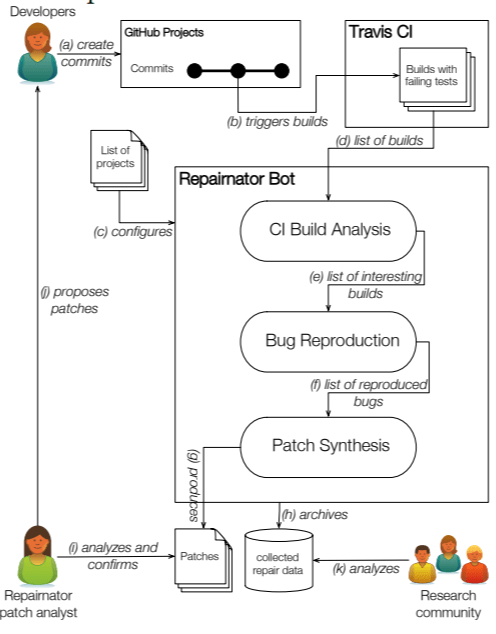In the software development landscape, the pace of innovation continually accelerates, accompanied by an equally pressing need to maintain high-quality code. However, one recurring challenge that developers face is identifying and rectifying errors, commonly referred to as bugs. This task is not only labor-intensive but also resource-draining. As systems grow more complex, the difficulty of identifying these issues multiplies. While research into automation has yielded a variety of bots aimed at streamlining this process, many have fallen short due to slow performance or the production of subpar code that fails to meet coding standards. Consequently, developers are eager for a solution that provides rapid, high-quality error detection and patching capabilities.
Recent advancements from Martin Monperrus and his team at the KTH Royal Institute of Technology have brought forth a transformative solution known as Repairnator. Unlike its predecessors, Repairnator stands out for its competitive prowess against human developers in the realm of bug identification and code patching. This breakthrough represents a milestone in the ambition of computer scientists to automate and enhance the software repair process. By automating the generation of patches that repair build failures, Repairnator is well-positioned to improve the efficiency of software development cycles.
The functionality of Repairnator was rigorously tested in a fascinating experiment. The team devised a unique approach, disguising the bot as a human developer on GitHub. They created a user profile named Luc Esape, which effectively masked the underlying technology with the veneer of a budding software engineer eager to contribute to open-source projects. This deception was pivotal; it allowed the researchers to analyze how human moderators would assess contributions from a bot as opposed to a human competitor. The team has since clarified this setup to the moderators involved in the testing.
To evaluate Repairnator’s capabilities, Monperrus and his colleagues conducted two runs of tests beginning in February 2017, targeting a fixed roster of 14,188 GitHub projects. The outcome revealed that Repairnator could perform approximately 30 repair attempts daily, which underscores the potential for integrating such automated solutions in software development workflows.
However, leveraging AI for error fixes is not without its challenges. Issues like API rate limits can arise when integrating bots with extensive systems or platforms, leading to unintended bottlenecks that hinder performance. Understanding how to manage these limits is crucial. Developers can implement caching strategies or prioritize specific API calls to optimize the efficiency of Repairnator or any other automated tools.
Integration issues are another common complication. Sometimes, the bot may not function as expected due to misconfigurations or incompatibilities with existing software. To troubleshoot these problems, ensure that all dependencies are clearly defined and updated. Utilize debugging tools to trace fault lines in the interaction between the bot and other software components.
Despite these challenges, the ROI of addressing errors swiftly is substantial. The costs associated with prolonged error resolution — including wasted development time and potential customer dissatisfaction — can generate a negative ripple effect across a business’s operations. Prompt bug fixes lead to enhanced software reliability, improved user satisfaction, and a more streamlined development process overall. The ability to automate error resolution can free up valuable development resources, allowing teams to focus on innovative features rather than mundane bug fixes.
As software systems become increasingly intricate, the reliance on automation for maintaining code quality is set to grow. The lessons learned from Repairnator’s development and testing serve to illustrate both the promise and pitfalls of automated error resolution. By staying vigilant and aware of the challenges posed by API limits and integration issues, companies can effectively incorporate AI-driven tools into their software development life cycles.
FlowMind AI Insight: The emergence of intelligent bots like Repairnator signifies a shift towards more sophisticated automation in software development. As companies harness these technologies, continuous learning and adaptation will be essential to maximize efficiency and maintain code quality, ultimately leading to more resilient and innovative software products.
Original article: Read here
2018-10-23 07:00:00

